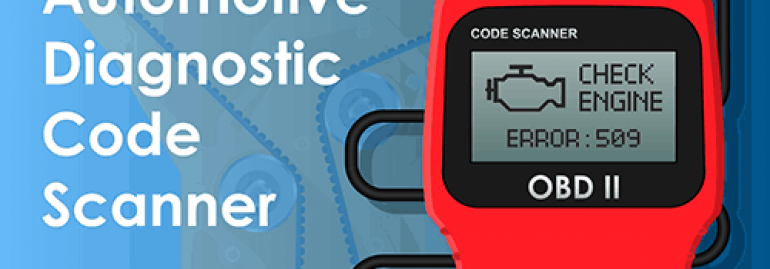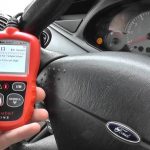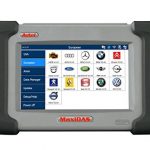
What is an OBD scanner? An OBD scanner is a diagnostic tool used by mechanics to diagnose a car’s problem. It collects information from various sensors and sends it to the Electronic Control Unit (ECU). The ECU then monitors the performance of different parts of the vehicle to determine if there are problems. An OBD scanner can help you avoid expensive car repairs by identifying the causes of car problems and restoring a vehicle to peak performance.
On-Board Diagnostics
On-Board Diagnostics (OBD) is a sophisticated piece of car diagnostic equipment. It uses a network of sensors to monitor the functioning of vital car components. When any malfunction occurs, a trouble code is generated. These trouble codes are either generic or unique to a vehicle manufacturer, and mechanics use a scanning tool to retrieve them and determine the cause of the malfunction. This information is then recorded by the OBD device.
On-board diagnostics are particularly valuable to mechanics and repair technicians, as they provide them with important data on the status of their vehicles. In addition to mechanics, these systems are also useful to state agencies. The information generated by these systems can help them identify problems, ranging from minor to major, and provide the proper repairs.
On-board diagnostics are increasingly becoming an integral part of many vehicles. If you’ve been looking for a way to get your vehicle working more efficiently and saving on fuel, consider installing an on-board diagnostics system.
Most on-board diagnostics systems are geared toward monitoring emission-related parameters. They also monitor other aspects related to on-board diagnostics, such as vehicle speed. The speed sensor has nothing to do with emissions, but does improve the accuracy of rough-road detection and misfire analysis. On-board diagnostics also have a sensor that measures the vehicle’s speed. The ECU (Engine Control Unit) is the “brain” of the system and analyzes data from the sensors.
On-Board Diagnostics (OBD) is an electronic system installed in nearly all engine components. This system monitors the performance of all of these components and helps to maintain emission levels. It can also control fuel injectors and help repair mechanics determine problems. In addition to these applications, it can help employers and employees stay on the road and drive safely. It can also provide the necessary data to monitor employee performance and improve safety.
The earliest version of OBD only covered the engine emission system. It did not monitor the fuel tank vapors, nor did it measure the exhaust emissions. In those early days, only the emission control devices were monitored. Warning lights on the dashboard were usually referred to differently depending on the vehicle’s manufacturer. Some cars had a warning light called check engine while others were known as power loss light. Regardless of the name, they were designed to alert the driver of a potential malfunction or error.
Diagnostic trouble codes
There are three main types of diagnostic trouble codes (DTCs): generic, manufacturer-specific, and vehicle-specific. The first digit indicates the type of trouble, while the last identifies the problem. A generic code indicates that the problem is internal, while a manufacturer-specific code indicates that the fault is external. For instance, a P0128 code indicates that the engine’s coolant temperature is below the thermostat regulating that temperature.
Typically, a vehicle’s computer contains a series of sensors that monitor the major components and generate diagnostic trouble codes when problems are detected. A trouble code is a message sent by the on-board diagnostics system to a vehicle’s mechanic, and understanding what the code means will help reduce associated downtime. The diagnostic trouble codes listed below represent different problems associated with the vehicle’s electrical system. These codes are an indication of potential problems, and the troubled component must be repaired or replaced.
The meaning of a DTC varies among vehicles, but it can indicate a variety of issues, including an out-of-range sensor circuit or an emissions control problem. Knowing where to look for a DTC will help you determine the problem and whether it is an urgent matter. In general, DTCs are stored in the Engine Control Module and the Powertrain Control Module. It’s helpful to know the location of the trouble code to ensure that it can be read.
Real-time vehicle diagnostics can help you determine the cause of your car’s engine problem. These systems will identify the severity of the problem and direct you to the nearest service center. Non-critical DTC fault codes are less critical but still require attention. Examples of such problems include those related to emissions but don’t cause excessive pollution. The check engine light is also a type two DTC. While this code is not a serious issue, it is important to note that the repair will likely involve significant downtime.
OBD-II diagnostic trouble codes are five-digit strings that represent a problem with a specific car part. The first character represents the type of car part, while the second character is a generic code. The third character is the digit, which indicates a specific problem or malfunction. This code will also indicate whether the vehicle has an engine warning light or a complete engine failure. When you’re unsure of the type of trouble code, you can refer to your vehicle’s manual or manufacturer’s website to find out more information.
On-Board Diagnostics port
On-board diagnostics are the systems that allow vehicles to self-diagnose and report system statuses. They are designed to give both vehicle owners and mechanics access to a vehicle’s health and status. If you’re not sure what the On-Board Diagnostics port on your vehicle is used for, read on to learn more. Regardless of your brand, there’s likely a port on your vehicle.
On-Board Diagnostics (OBD) ports connect the vehicle’s computer to the user’s computer and help you diagnose any problems with the car. This port is also used for uploading diagnostic information. Some cars have an On-Board Diagnostics port, and car thieves have taken advantage of it in attention-grabbing videos. The On-Board Diagnostics port is also used to update the software of a car’s electronic control units.
Your car has an OBD port on the driver’s side. Locating the port can be difficult, and sometimes it is hidden by a cover. Consult your manual for a specific location. You can also use a universal car diagnostics scanner, such as the Carlink diagnostics system. However, you should be aware that these systems require a high-quality car diagnostic port. The On-Board Diagnostics port is often covered.
A second important purpose of the On-Board Diagnostics port is to monitor emission levels. Emission related parameters are monitored in real time to ensure the car is running safely. The system also provides the Malfunction Indicator light. By using these diagnostics, you can find out if a car needs repair. If it does, it may be possible to get it fixed right away. It can save you money in the long run.
On-Board Diagnostics warranty
On-Board Diagnostics (OBD) has many implications for the warranty. It affects many parts of the organization and requires executive-level management to know its obligations to regulators and to adhere to the rules. ARB may impose fines on a company for noncompliance, and penalties can be assigned at the certification stage. In addition, the new regulations also require companies to report warranty-related information to the Department of Motor Vehicles (DMV).
The main purpose of On-Board Diagnostics is to detect problems before they affect the vehicle’s performance. These systems use computer technology to monitor key engine components and emissions systems. They can detect problems before drivers even know it is wrong. Since 1996, the U.S. EPA has required auto makers to include On-Board Diagnostics (OBD) systems in their vehicles. However, they are not without risk.
The EU Commission and Competition Authorities have decided that OEMs cannot void warranty coverage by charging drivers for unauthorized third-party On-Board Diagnostics. This ruling has been welcomed by the automotive industry and has led to an open-ended debate on the legality of OBD port access. The competition authorities ruled that vehicle manufacturers, parts makers, and repairers must be held accountable for the quality of their products and services.
On-Board Diagnostics are an essential component of modern vehicles. These systems allow car makers to diagnose almost any issue in an engine before it affects the vehicle’s performance. Oftentimes, these diagnostic systems generate codes that can be read with a variety of code readers. As a result, drivers can avoid costly repairs by addressing the issue as early as possible. They can also reduce fuel consumption by reducing emissions.






